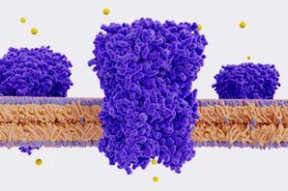The study of membrane proteins holds immense significance in the realms of drug development and disease therapy. Membrane protein antibodies tend to have higher specificity and targeting and occupy an important position in the field of disease therapy. However, the unique nature of membrane proteins has led to slow progress in the study of membrane protein antibodies. Membrane protein preparation is critical in membrane protein research and is the key to ensuring membrane protein activity and preparing antibodies for membrane proteins. Creative Biolabs provides a well-established platform for membrane protein research that can facilitate the smooth conduct of your membrane protein research.

Proteoliposomes are unilamellar liposomes in which proteins are inserted into their lipid bilayers. They can provide additional complexity and be used as a model system for biological membranes. Proteoliposomes can be formed by removing detergents from solubilized lipid/membrane protein mixtures or from detergent-solubilized mixtures of membrane proteins and preformed liposomes, typically in 2D crystallization experiments along with planar two-dimensional (2D) crystals (membrane proteins incorporated as regular arrays into planar lipid bilayers), and may occur in cell-free protein synthesis (CFPS) experiments when liposomes are present. Proteoliposomes may stabilize membrane proteins and support the production of membrane protein antibodies.
Lipoparticles are amphiphilic molecules dispersed in the aqueous phase, with the hydrophobic tails of the molecules tending to cluster together and avoid the aqueous phase, while the hydrophilic heads are exposed to the aqueous phase, forming closed vesicles with a bilayer structure. Common methods of liposome preparation include swelling, extrusion, emulsification, ultrasound, electroformation, ink jet formation, and freeze-thaw cycles. In practical applications, the activity, stability, and crystallization properties of membrane proteins can be modulated by adjusting the ratio and type of lipids in liposomes to achieve the desired state. Consequently, utilizing liposomes for membrane protein reconstitution could be a viable approach in the production of membrane protein immunogens, ensuring the preservation of their activity and conformation for antibody generation.
Nanodiscs are disc-shaped phospholipid bilayers, mainly synthetic nanodiscs and MSP nanodiscs. They consist of two main structures, a phospholipid and a stabilizing band (membrane scaffolding protein or synthetic polymer) that binds the phospholipid. Nanodiscs are able to mimic the natural phospholipid bilayer of cells and can provide a membrane-like environment in solution, having the same lipid composition as cell membranes and better stabilizing the natural conformation of membrane proteins. This property is crucial for both the preparation of membrane protein immunogens and the production of membrane protein antibodies. However, the use of nanodiscs also requires the addition of detergents to varying degrees, which can impact the activity of membrane proteins. Therefore, in practice, specific implementation options can be chosen depending on the specific project and experimental requirements.
Due to the usage of detergents in most membrane protein stabilization methods to varying degrees, the activity of the membrane proteins can be affected. As a result, scientists have developed the polymer stabilization technique, which eliminates the need for any detergent additives. Nanoscale lipid discs containing membrane proteins are stabilized by adding polymers such as SMA, diisobutylene maleic acid (DIBMA), and polymethacrylate (PMA). Different kinds of polymers can complement each other in different ways. Hence, in practical investigations, appropriate polymers can be chosen based on the specific experimental requirements.
Membrane Proteins Proteoliposomes Introduction
Membrane Proteins Lipoparticles Introduction
Membrane Proteins Nanodiscs Introduction
Membrane Proteins Polymers Introduction
Creative Biolabs aims to provide you with valuable insights and expertise on membrane protein formats, ensuring the seamless progress of your project.
All listed services and products are For Research Use Only. Do Not use in any diagnostic or therapeutic applications.